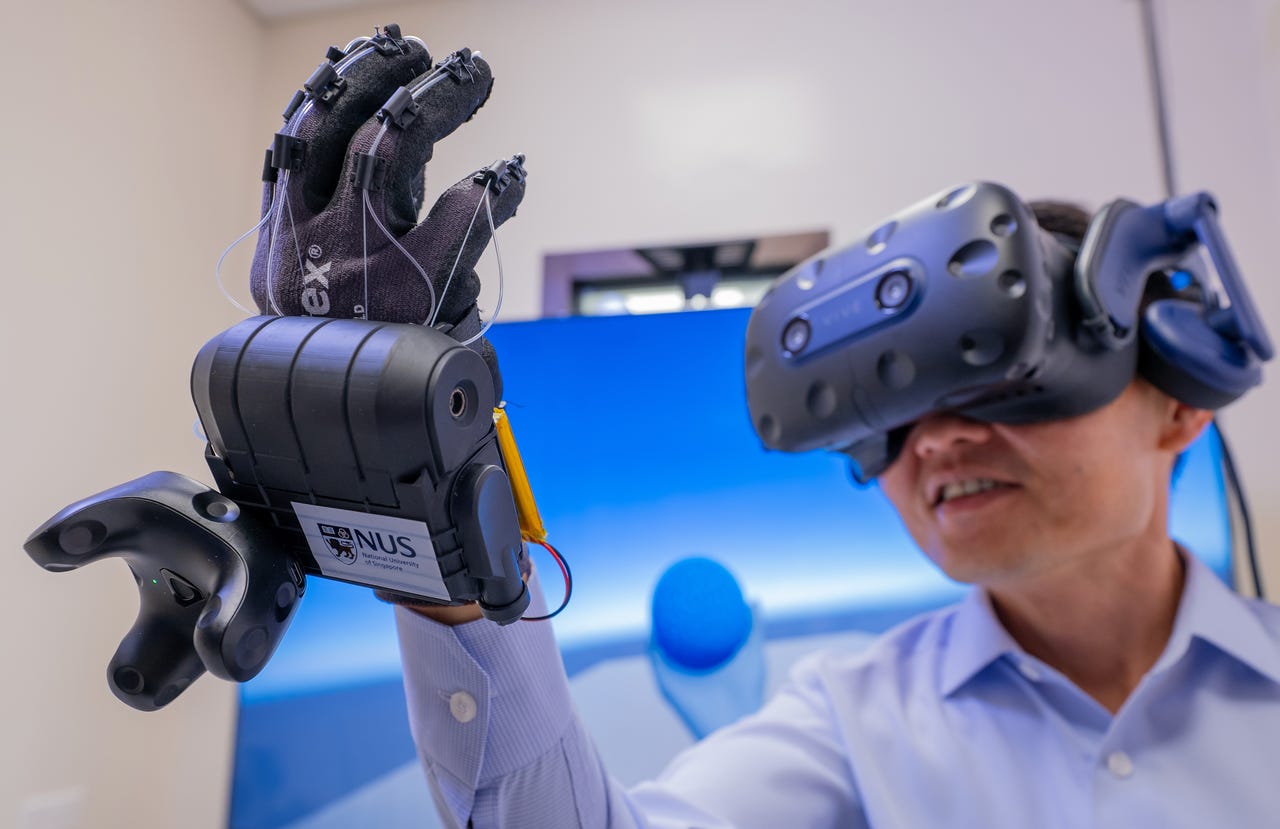[ad_1]

HaptGlove makes use of haptic suggestions to boost customers’ digital expertise. NUS
Researchers from the National University of Singapore (NUS) create gloves that may allow customers to extra realistically expertise the “really feel” of objects in digital environments. Touting the creation as completely different from present applied sciences, they are saying the HaptGlove delivers real-time strain to fingertips and simulates the feel of objects.
The glove faucets haptic suggestions and pneumatic management that’s embedded with the researchers’ microfluidic sensing expertise. This helps shrink the scale and weight of the glove, with out the necessity for cumbersome equipment, in accordance with the NUS group.
HaptGlove options 5 pairs of haptic suggestions modules, one for every finger, which can be managed wirelessly to learn the VR object close to its form, measurement, and texture.
A microfluidic pneumatic indenter pushes real-time strain to the wearer’s fingertips, enabling him to “sense” contact when the avatar touches, grabs, and strikes the VR object. The glove additional restricts the wearer’s finger positions to simulate the form and texture of the thing.
Additionally: Should you pre-order HTC’s VIVE XR Elite headset?
The NUS researchers famous that whereas haptic gloves weren’t new, merchandise at present accessible out there sometimes used vibration motors and didn’t present a practical sense of contact. As an illustration, they may not precisely simulate the form or hardness of a VR (digital actuality) object.
Others that used pneumatic actuators to generate a way of strain, however these had been typically cumbersome in design and restricted the person’s motion.
“My expertise with VR and the metaverse has all the time been unsatisfactory,” mentioned Lim Chwee Teck, director for NUS’ Institute for Well being Innovation and Expertise, who leads the analysis group. “VR shouldn’t be nearly a visible and auditory expertise; it ought to current the power to work together with VR objects. Nevertheless, present strategies of urgent on a digital panel or interacting with one other avatar lack the feeling of contact that we expertise in the actual world.”
Additionally: Is Apple sweating yet? These 4 companies just turned up the heat at CES
With the usage of software program developed by the researchers, HaptGlove clocks a visual-haptic delay of lower than 20 milliseconds, which NUS mentioned is quicker than standard haptic gloves. Weighing at 250 grams, it is also lighter than competing merchandise out there, which weigh 450 grams.
HaptGlove was first conceptualised in 2019 and a prototype was developed two years later, with 20 customers roped in to check the product.
The NUS researchers have filed for patent and wish to commercialise the glove inside two years, with the purpose to take action at half the worth of merchandise at present offered out there, which usually value between SG$5,000 ($3,786) and SG$20,000 ($15,145).
Additionally: Best of CES 2023: 6 innovations that will shape the future
Efforts listed below are led by the college’s spinoff unit Microtube Applied sciences, which focuses on the event of sensing applied sciences for video games and metaverse.
[ad_2]
Source link



